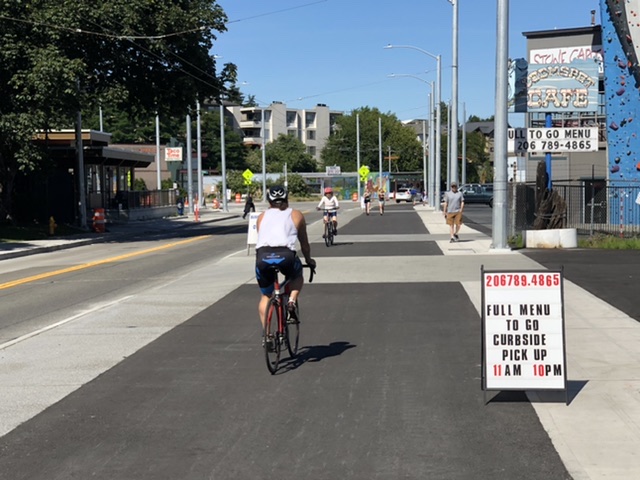It’s been forty years since the first segments of the Burke-Gilman Trail opened, replacing parts of Seattle’s railway infrastructure with bicycle and pedestrian thoroughfares. The final segments—the Missing Link—are starting to take shape through Ballard.
It’s hard to decide what part of the process this is, whether it’s a beginning, a middle, an end, or some mix of the three. Which is kind of the same as deciding how to start discussing the trail itself and the ways it’s going to fit into the neighborhood.
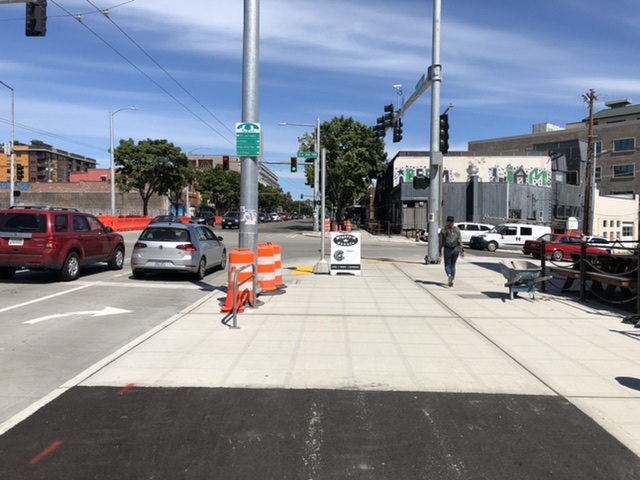
Regardless, the barricades at 24th Avenue NW are being removed, so that’s as good a place to start as any. As of Thursday, three of the four corners have dry cement and the majority of orange barriers are gone. There’s a sign for a local donut emporium in the middle of the path, just where the asphalt trail ends. The first phase of the Missing Link is opening, and people are beginning to find their ways to claim it.
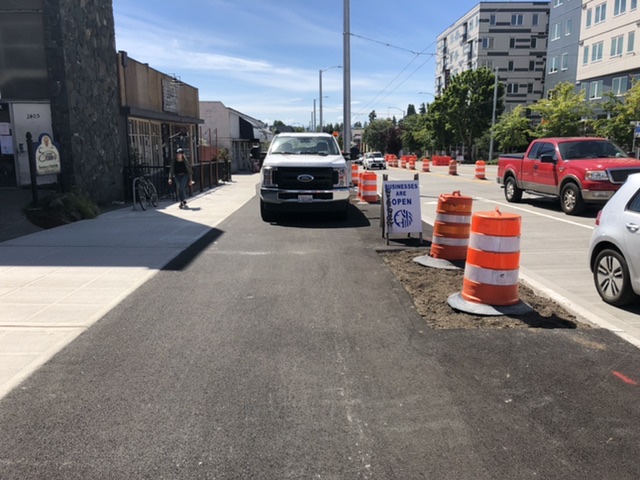
The plan is, in general, to have a 12-foot wide asphalt multi-use trail run along the south side of Market Street for the distance between 24th and the Ballard Locks. It’s a little less than a half-mile, or about a third of the overall 1.4-mile Missing Link. At the Locks, the trail will connect with the existing path running to Golden Gardens. Between the trail and the buildings will be a concrete sidewalk that varies from 5- to 10-feet wide. Where possible, there will be another concrete buffer between the road and the trail.
Unfortunately, the asphalt invites questionable parking decisions, as illustrated by this construction crew member’s vehicle (see above). Hopefully, as the pathway is eventually striped and filled with people, this issue will decrease.
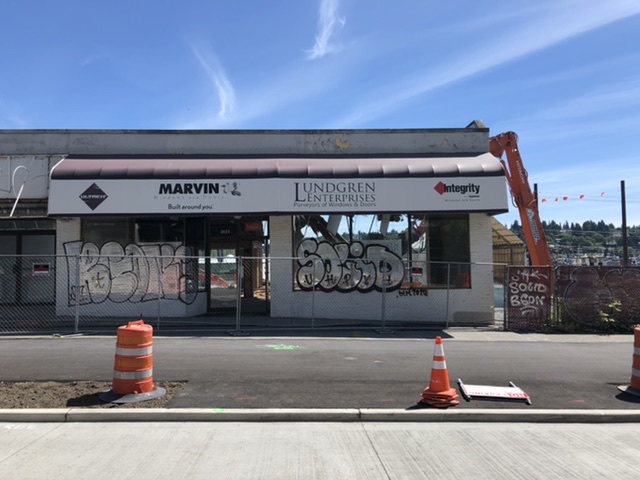
The majority of the Missing Link runs through the Ballard Urban Village. Demolition is just beginning on new apartments at 2417 NW Market Street, replacing a single-story building that housed a secondhand bookstore and an inflatable boat shop, among others. The trail actually appears in the design documents for the apartment building, along with discussion of how the retail addresses it. Parking for the building will be from the south side, not interfering with the trail, and bike parking appears in the plans. These hint to the ways the neighborhood will be adapting to the trail.
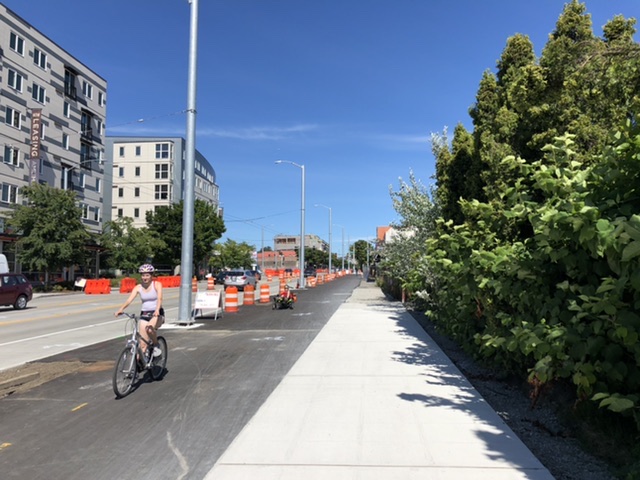
A second site at 2501 NW Market Street has recently been proposed for a 110-unit senior community. The current use as a storage lot for the neighboring shipyard is hidden behind this tree line.
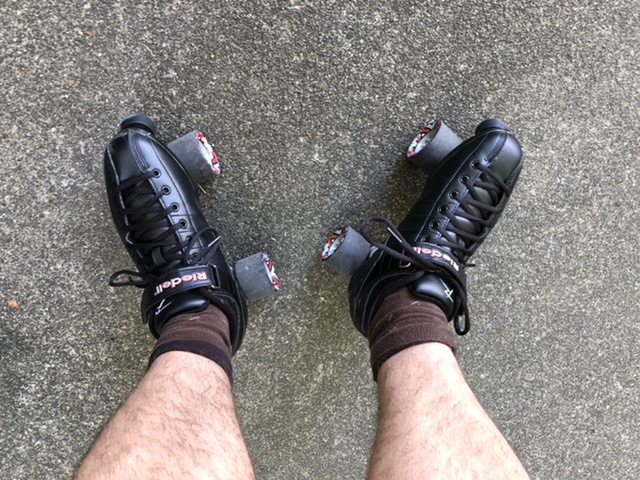
One of the projects undertaken during quarantine has been trying to keep up with the short people who live in my house rent-free. This has included strapping wheels to my feet and tempting death on skates for the first time in quite a few years. This chunk of the Burke-Gilman Trail is likely the flattest, smoothest chunk of paving in Northwest Seattle. The roads and sidewalks to get to the trail are Hell, but the trail is fantastic. Which is helpful to avoid catastrophe and hospitalization as we regain our roller balance.
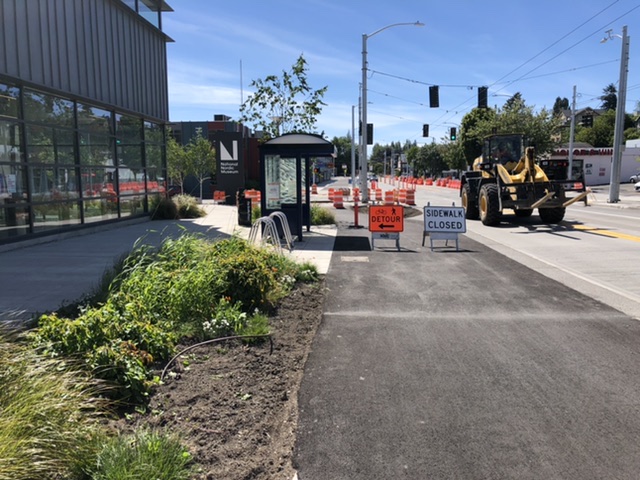
One location where the road-side sidewalk is sacrificed is at the National Nordic Museum. This allows the trail to avoid the very large and very new bioretention plantings installed as part of the museum’s construction. As these plantings grow, it may emphasize how installation of the trail removed several very large trees and left a bare feeling to the road. Fortunately, there are parallel parking areas that may be re-examined if the need for planting arises.
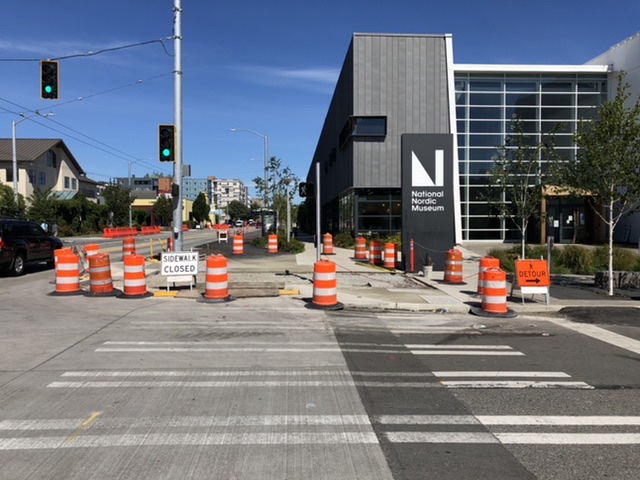
At the moment, the most difficult chicane in the trail is 26th Avenue NW at the entrance of the National Nordic Museum. We did witness a few cyclists plow through the very thin yellow ropes that mark off the construction area. Pictures withheld to avoid mockery and lack of me turning around fast enough.

It cannot be overstated how much this construction project was not just the addition of a trail. While the trail is a huge benefit, the work was a complete rebuilding of the road from the ground up. Bike lanes are never just bike lanes. This Multimodal Corridor project included rewiring overhead bus lines; new surfaces, curbs and gutters in the street; with some trail work thrown in.
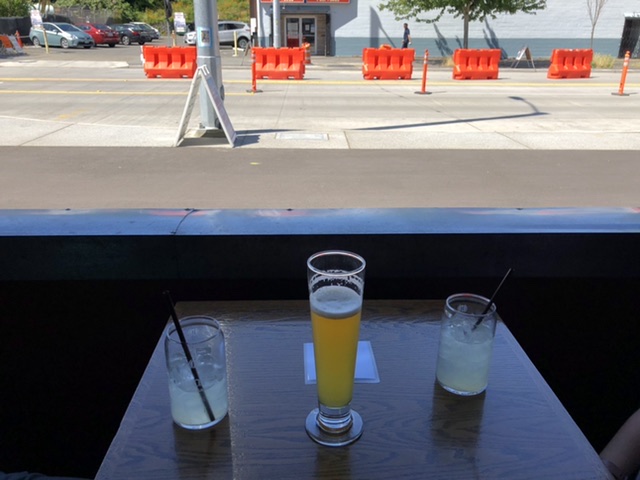
Construction of the trail has interrupted business at local favorites along Market Street. This has prompted the Ballard Alliance to request the city reconsider repaving further sections of Market Street until a more robust economic recovery is underway. In the mean time, Kiss Cafe has a lovely giant roll up window, which makes for a pleasant stop inside a restaurant for the first time in four months.
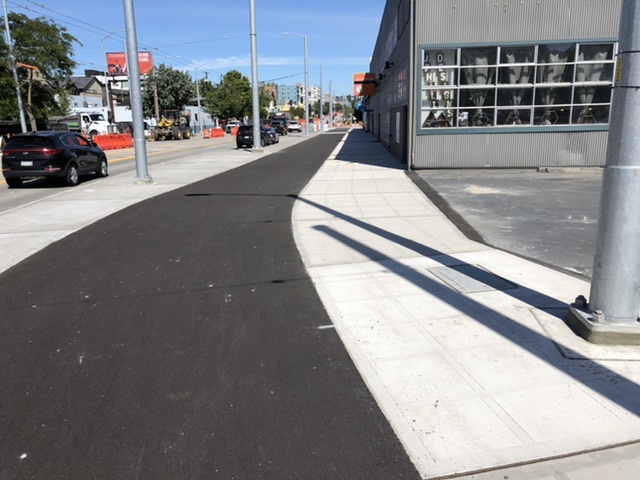
The reconfigured road has lead to changes in access for neighboring businesses. There are fewer curb cuts that put vehicles across the trail, which is welcome. However, it will take some time to get used to. Large stretches of pavement that used to have driveways could be enticing for drivers, even at the risk of destroying their car’s undercarriage. Some temporary signage at the Stone Gardens parking lot would be a welcome safety measure.
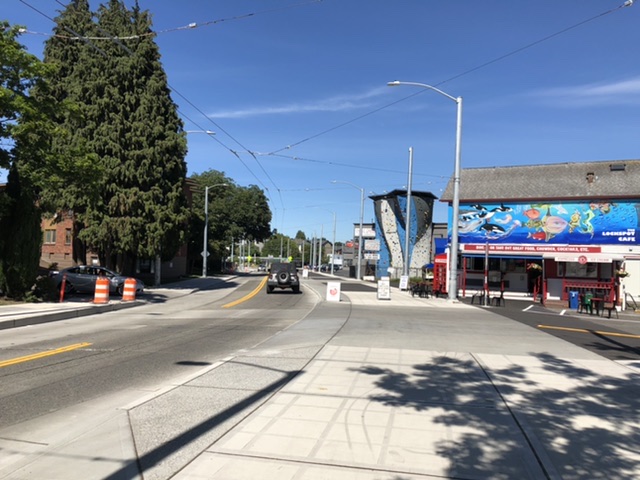
At its connection with the existing trail and the Ballard Locks, the first segment of the Missing Link does the incredible. It relegates the automobile roadway into an almost humane two-lane width. The slowed traffic makes for a pleasant outdoor eating area at Lockspot Cafe, who is serving growlers of beer out their to-go window.
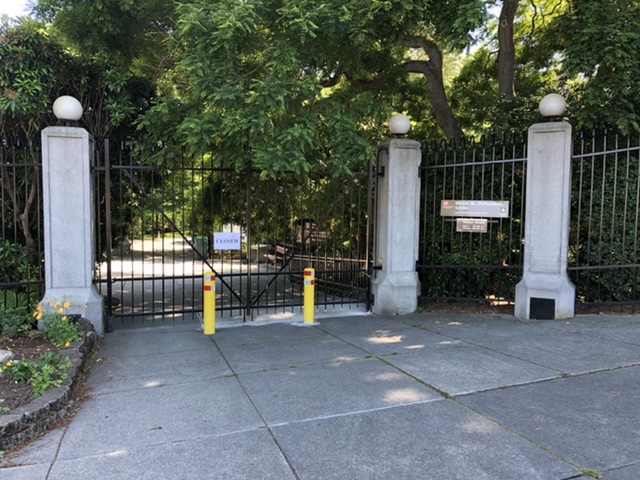
While the new trail is opening, it is important to remember that we’re still in a pandemic. The trail was fairly well spaced at 4pm on a Thursday. Experience says it gets a lot fuller at 5pm.
Which puts us at the place where we began, at yet another end to the trail. The Army Corps of Engineers has closed the Ballard Locks to pedestrian traffic, cutting off access and emphasizing the need for a safe and consistent pedestrian connection across Salmon Bay that is not the horror show of the Ballard Bridge.
We look forward to a time when these are open, as well as the next segments of the Missing Link.
Ray Dubicki is a stay-at-home dad and parent-on-call for taking care of general school and neighborhood tasks around Ballard. This lets him see how urbanism works (or doesn’t) during the hours most people are locked in their office. He is an attorney and urbanist by training, with soup-to-nuts planning experience from code enforcement to university development to writing zoning ordinances. He enjoys using PowerPoint, but only because it’s no longer a weekly obligation.

